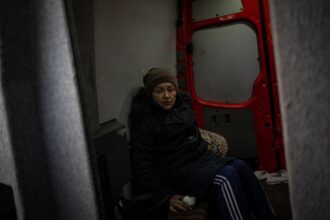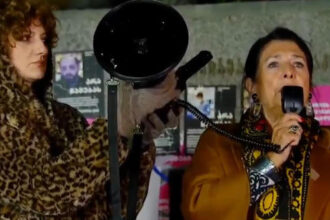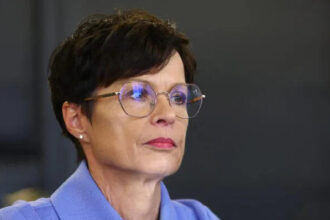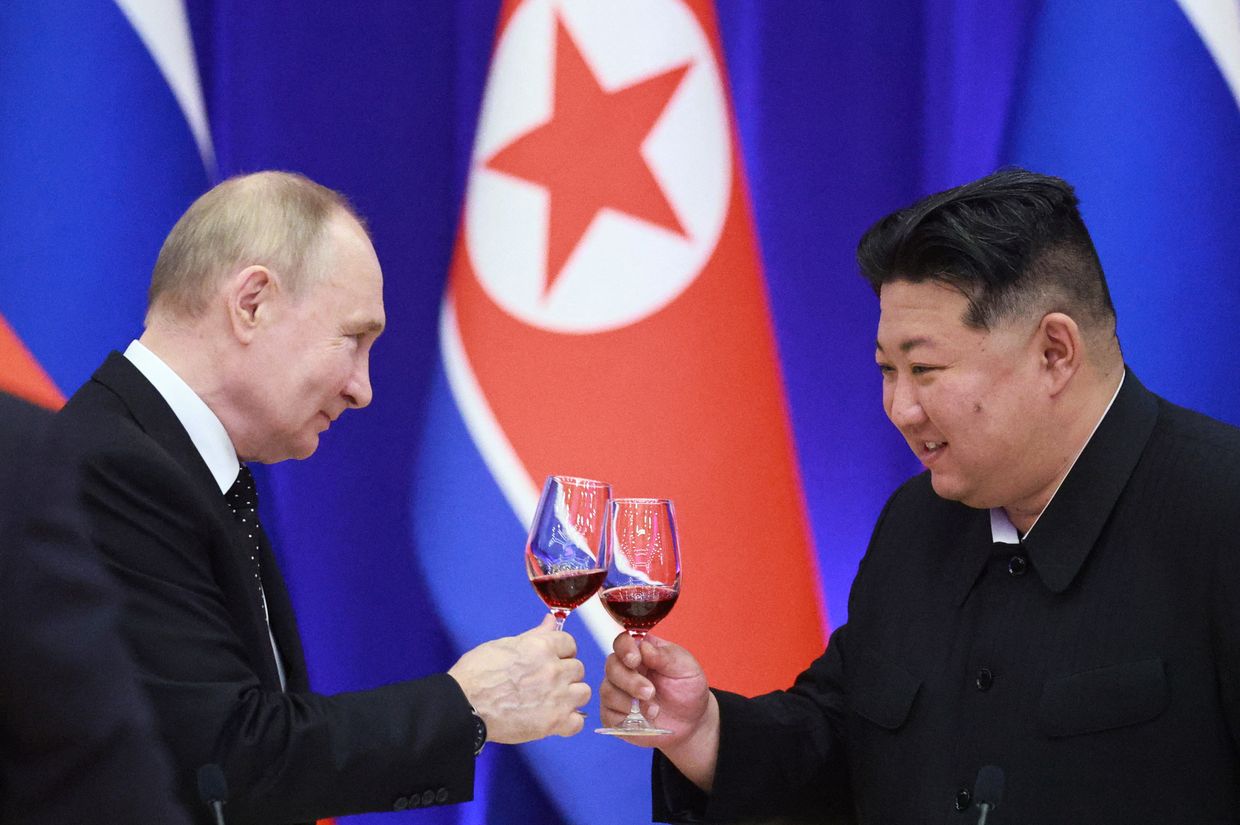This pool photo, distributed by the Russian agency Sputnik shows Russian President Vladimir Putin (L), and North Korea’s Kim Jong Un, (R), attending a Gala concert at Pyongyang in North Korea on June 19th, 2024. (Gavriil Griogorov/POOL/AFP via Getty Images)
On October 13, Ukrainian President Volodymyr Zelensky warned against Russia’s “increasing allegiance” with North Korea. He said that it had gone beyond just supplying weapons and was now “actually transferring people from North Korea into the occupying forces.”
Zelensky made his statement days after reports claimed that several North Korean officers were killed in an Ukrainian missile strike on occupied Ukraine. This sparked speculation about how involved Pyongyang is in Russia’s full scale invasion.
“We see an increased alliance between Russia and regimes such as North Korea,” Zelensky said. He had previously pointed out Russia’s growing role within an axis rogue regimes including Iran who are allied with Ukraine and its Western Allies.
“This is not just about transferring arms. It is about transferring North Koreans to the occupying forces.
What can we be sure of?
There is very little to report, other than the stated intentions of Moscow and Pyongyang.
On June 19, Russian President Vladimir Putin, and North Korean leader Kim Jong Un, signed a strategic defence agreement between Moscow and Pyongyang.
As part of this alliance, the North Korean army announced that a unit of engineers would join Russian forces in Donetsk Oblast next month.
It is not clear if the six North Koreans who were reportedly killed belonged to this unit.
On October 4, Russian milbloggers reported North Korean military personnel visiting the front line as part of an “exchange experience” program. They were shown how Moscow’s forces prepare defensive positions and assault operations techniques.
In a briefing to the press on June 25, Pentagon spokesperson Pat Ryder stated that North Korean troops will become “cannon-fodder” if joined Russian forces in Ukraine.
What are we less sure about?
The reports of six North Koreans killed in Ukraine were not confirmed beyond a single source, although South Korean Defense Minister Kim Yong-Hyun stated earlier this month that it was most likely true.
Zelensky did not provide any further evidence on October 13, and the Kyiv independent has been unable verify the reports.
The Guardian reported, citing an anonymous source in Ukraine on October 10, that “dozens of North Koreans” were behind Russian lines to help launch the Kn-23 missiles supplied by Pyongyang.
Lim Eul-chul is a professor of the Institute for Far Eastern Studies, Seoul. He told AFP that Pyongyang could view the deployment of North Korean troops in Ukraine as an opportunity for their military to “learn how to handle different weapons and get real-world combat experiences.”
“This could even be the driving factor behind sending North Korean troops — to provide them a diverse experience and wartime training.”
On Oct. 10, Kremlin spokesperson Dmitry Peskov dismissed the reports as fake news.
A Washington Post article from October 11 cited an official of Ukrainian military intelligence as saying that “several thousands” of North Korean troops are undergoing training in Russia, and could be deployed into Ukraine by the end the year.
The report said that North Korean officers are already in Ukraine as observers, but no units have been reported yet.
The Institute for the Study of War, on October 11, said that the deployment of North Korean forces to Ukraine could allow Russian forces to focus on priority areas at the frontlines.
It also said that if the North Korean troops are of poor quality they “could create opportunities for Ukrainian exploitation.”
In early 2023, there have been reports that North Korean police or military personnel will travel to the occupied Donbas to “join reconstruction efforts”.
What about other areas for cooperation?
There are plenty of other signs that show the growing military ties between Moscow, Pyongyang and even North Korea.
After the invasion of Ukraine and the depletion of ammunition stocks after two-and-a half years of war, Russia is increasingly dependent on North Korean weapons.
Late in June, Russian President Vladimir Putin signed a partnership agreement with North Korean Leader Kim Jong Un. They both pledged to help each other if attacked.
In August, South Korea’s Yonhap News Agency reported that North Korea had sent containers to Russia which could contain over 6 million artillery rounds.
In exchange for the ammunition, Russia provided North Korea with technology that would help it deploy spy satellites and tanks as well as aircraft.
The Times reported in its article published earlier this month, that North Korea supplied half of the artillery shells Russia used in Ukraine.
Though many of the shells were believed to be defective, the sheer volume of them being shipped to Moscow’s forces is believed to have played an important role in Russia’s relentless advances in eastern Ukraine. Most recently, the capture of Vuhledar, in Donetsk Oblast, earlier this month.
Shin Won-sik said that the South Korean Defense Minister, Shin Won Sik, stated in June that Pyongyang sent dozens ballistic missiles to Moscow that its troops fired at Ukraine.
But their reliability is also questioned. Reuters reported that on May 7, citing the Ukraine’s Prosecutor General’s Office, around half of Russia’s missiles fired by North Korea at Ukraine malfunctioned and exploded mid-air.
Chris York is the news editor of the Kyiv Independent. He was the head of news for the Kyiv Post before joining the team. He spent almost a decade in Britain working for HuffPost UK. He holds a MA in Conflict, Development, and Security, from the University of Leeds.
Read More @ kyivindependent.com




